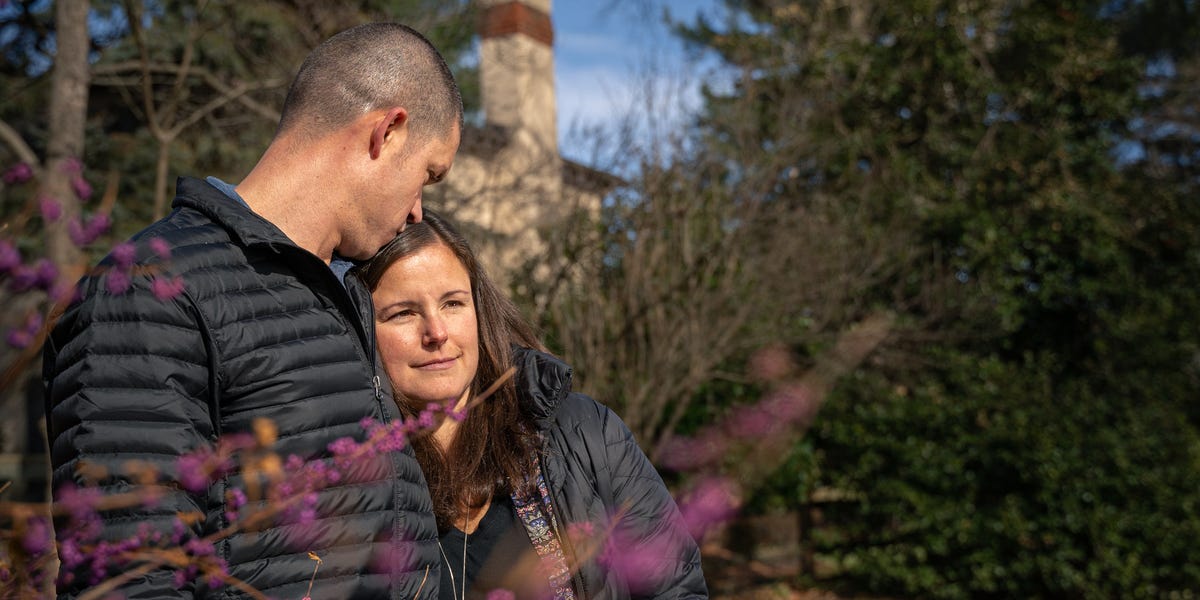
Three years ago, Bridgette *, a wife and mother of two young children, was shocked when a routine Pap smear revealed abnormal cells. Bridgette was devastated when additional tests confirmed she had an HPV-related cancer.
HPV (human papillomavirus) is a sexually transmitted virus that infects 85 percent of sexually active people during their lifetime. For most people, the infection clears up on its own, but that’s not always the case, according to the Centers for Disease Control and Prevention (CDC).
For some, the virus can stay in the body and cause certain HPV-related cancers and illnesses later in life, the CDC says. There is no way to predict who will or will not remove the virus.
As a nurse used to taking care of others, it was a challenge for Bridgette to be a patient. “It took some time to understand everything,” she says.
Come up with an action plan
Bridgette’s journey began with an abnormal Pap smear during a routine visit to a gynecologist. It went on with a biopsy that showed she had stage one cervical cancer. Bridgette, who is now in her late 30s, was diagnosed at a much earlier age than the average onset of HPV-related cervical cancer, which is about 49, according to the CDC. For some people who don’t clear up the virus, a cervical cancer diagnosis can occur years or decades after they are infected, and people can be diagnosed with cervical cancer anywhere from the ages of 20 to 80. For Bridgette, an HPV-related cancer diagnosis raised many questions, and it was difficult to fathom her new reality. “I knew HPV could potentially cause cancer,” she says, “but I also thought it couldn’t happen to me.”
Within a few weeks, she met with a gynecological oncologist to work out a treatment plan, including radiation and chemotherapy. When detected at an early stage, the five-year survival rate for women with invasive cervical cancer is about 90 percent. “After seeing the gynecological oncologist, it gave us hope because we could have a plan and know what to do,” says Bridgette.
Bridgette’s treatment was successful, and she was cancer-free and grateful for the support of her family and care team on her way to recovery.
Lessons from her journey to cancer
Bridgette recognizes the importance of having a strong support system during cancer treatment. “If I could go back in time and say something to myself when I was first diagnosed, I would say to ask for help and then let myself be sick,” she says. “I thought I could conquer the world, but allowing myself to rest when I needed to rest and knowing that people would help me was very important.”
When Bridgette was diagnosed with HPV-related cervical cancer, she was in complete shock; she never thought it would happen to her. Learn more about her experience with HPV-related cervical cancer in this video, courtesy of My HPV cancer story
Whatever happens, Bridgette remains committed to sharing her story and educating others. Not everyone realizes that HPV can cause cervical cancer, she says, adding, “Not only are women at potential risk for HPV-related cancers, but men are also at risk.”
Bridgette has also learned to live in the moment. “Being diagnosed with cervical cancer allowed me to take a moment to realize that life is precious and we shouldn’t think too long,” she says. “We must allow ourselves not to be in such a hurry. I’ve learned to enjoy my kids and enjoy my husband because that’s really what matters. “
What You May Not Know About HPV-Related Cancers and Diseases
Because HPV often has no visible signs or symptoms, someone with the virus may be able to pass it on without even knowing it. For most people, HPV goes away on its own. But for some women, HPV can eventually cause certain cancers and diseases, such as cervical cancer, just like Bridgette. Individuals should talk to their healthcare provider about their possible risk of HPV-related cancer.
“The majority of patients I see have some idea and understanding of HPV, but there is still a lot of misinformation about it,” said Pari Ghodsi, MD, a board-certified OB-GYN based in Los Angeles. “The more people talk to each other and also their doctors about HPV, the more we can open the conversation and hopefully convey the right knowledge to everyone.”
Here are four HPV-related cancer statistics from the CDC:
What can you do?: According to Dr. Ghodsi, the first step is simply to realize that HPV-related cancer can affect you. Start talking with your doctor about what you can do to stay on top of your health, such as getting routine Pap smears to screen for cervical cancer. You can also take steps to learn more about the link between HPV and certain cancers and diseases by visiting My HPV Cancer Story.
This content was created and maintained by a third party and imported into this page to help users provide their email addresses. You may find more information about this and similar content at piano.io